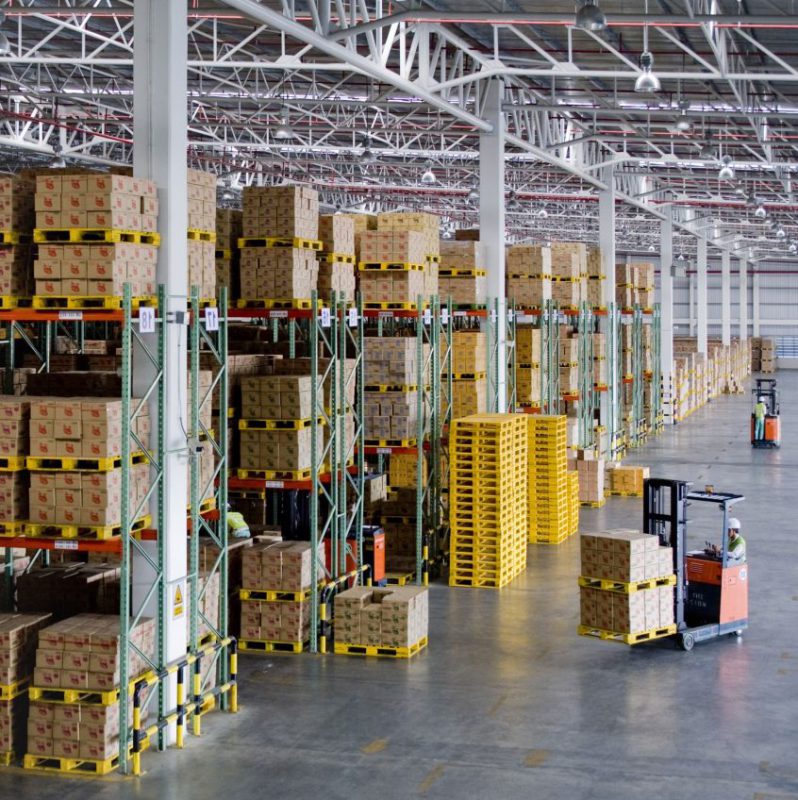In previous blog posts, we covered topics ranging from different uses for forklifts to picking the right machine. For those in the supply chain industry, it’s easy to understand that if a forklift is needed for the job – nothing else will do, but before the 1900s, forklifts were still a dream of the future. Now that they’ve been around for nearly 100 years, how far-reaching is the influence and need for this common machine?
According to the Industrial Truck Association, forklift sales were at an all-time high for 2015. In fact, retail orders totaled 225,534 units, and it’s the first year that sales were higher than the industry’s pre-recession levels of 215,000 units back in 2006.
Brett Wood, president & CEO of Toyota Material Handling North America and ITA Chairman of the Board said, “After a slow and steady recovery from the recession, the North American lift truck industry is healthy and strong.”
Let’s take a look at the history and importance of this piece of equipment.
A Brief History
The two-wheel hand truck served as the earliest version of today’s modern material handling equipment. In 1906, the Pennsylvania Railroad turned the common, manual baggage cart into a battery-powered wonder, allowing loads to be transported much easier.
Other industries started to utilize this popular idea and, according to the patent office, the first portable elevator was invented in 1887. Surprisingly, it wasn’t until 1909 that the first lift truck appeared on the industrial scene, starting its legacy in the paper factories.
- 1800: Two-wheel hand cart
- 1867: Patent for a portable elevator
- 1887: First efforts combining horizontal and vertical movement
- 1906: Pennsylvania Railroad created the first powered platform truck
- 1909: First steel forklift
- 1913: Crane-mounted platform truck
- 1915: Powered platform truck with horizontal and vertical movement
- 1919: Vertical lifting cantilever
From 1919 to 1930 and beyond, improvements have been made, applications broadened and ideas expanded. Today’s forklifts aid the supply chain in the transportation and delivery of goods. Without it, most industries could come to a virtual standstill.
The Supply Chain
What is the “Supply Chain?” Simply put, it’s the network that bridges the gap between manufacturers and consumers. Supply chains would have a hard time relying solely on manpower for movement of materials.
Forklifts play an important role in the system, but who benefits from the use of these machines in real-world examples?
Warehouses: One of the most basic and critical pieces of the supply chain, the warehouse, would not be able to function without a forklift. Product flow is paused briefly in the distribution centers before it moves on to the next destination. If it weren’t for the lift truck, we’d be relying on inefficient ways to stack, load and move freight from storage to shipping.
DHL Global Forwarding recently switched exclusively to electric forklifts for their new crossdocking facility. They rely on these machines to keep operations running efficiently. The trucks are vital to the warehouse.
Brian Lindholm, executive vice president, central region, for DHL Global Forwarding says, “We handle about 45 million pounds of cargo a month and operate around the clock every day of the year but Christmas. The lift trucks operate nonstop.”
Ports: Shipyards play a huge role in the supply chain network, acting as the link between sea, roads and railways. Lift trucks are links too. Serving as the transport from crane to warehouse to truck, these machines are a responsible for the movement of more than 2 billion tons of domestic and import/export freight annually, including everything from food to fuel to building materials.
Big Box Retailers: Superstores like Wal-Mart use forklifts for the transportation of goods from their warehouses to store shelves. In fact, back in 2014, the company decided to switch to hydrogen fueled trucks for better efficiency, dependability and sustainability. Home Depot, Kroger and Nike are a few other big retailers that have made the switch to fuel cell technology.
Material handling equipment comes in contact with products many times during the manufacturing and distribution process, so it’s easy to see why these machines are vital to the economy. Without them, there would be a lot of manual heavy lifting!

